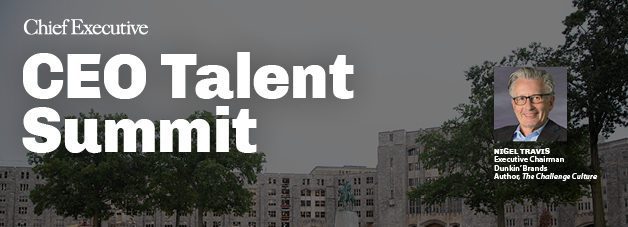
A recent Deloitte report stated that M&A deals are on the rise, but unfortunately so are the number of corporate and private equity deals that are not delivering on their expected value. In fact 40% of PE companies surveyed said half of the deals fail to generate expected value. After economic forces, the two biggest factors in the decline were Integration (execution) and talent-related issues. Both are linked to communication.
In hindsight, post M&A or other transformation, leaders will often say “We should have communicated earlier and more often.” What they usually don’t offer though are specifics. In the past, sharing little or no information with employees may have been an acceptable practice because companies usually expect some attrition and “collateral damage” during such change. But in today’s extremely tight job market this loss of key talent can be devastating; it can reduce the value of deals as well as disrupt organizational readiness. Leaders must realize that in today’s workplace climate, everyone is a “flight risk,” employees and customers alike.
The success or failure of any initiative hinges on clear, consistent, authentic communication. Insufficient or absent communication creates mistrust, insecurity and drives valuable people away. Keep in mind, in a tight job market, no one has to stay in a stressful, uncertain environment.
Here are five new “rules” to communicate better during M&A or other change that will help you retain talent and thus preserve the integrity of the deal. If you are planning transformation or change other than M&A, these same rules can be applied.

Join Denise Graziano, Nigel Travis and others at West Point for our annual CEO Talent Summit. Register here.
1. Communication is a dialog, not a monolog
Active listening is key to success. Deploy tools and technology, use in person and multi-channel approaches for conversations.
2. Get a baseline
Prior to any internal announcements take an employee assessment to gain perspective from stakeholders on both sides of the transaction. Use tools that can give you a general gauge of temperament. It is important to do this beforehand so that you can monitor change in subsequent assessments during the deal progression. Additionally, look for insight to identify which employees are motivated by and inspired by change. These people can then be deployed as internal ambassadors who can help build consensus during the transition. Similarly, identifying those who may be change-averse can help tailor communication.
3. Think like a reporter
Share – what, why, who, when where and how. Convey the “future-perfect” of why employees should stay. This must be a robust, comprehensive approach with regular updates throughout the process.
What
Outline what is going to happen. Change is disruptive. Human beings are wired to protect themselves, and when we don’t have any or all of the details we would like to have, we fill them in. Gossip, rumor and assumptions can spread like fire and cause people to seek employment opportunities elsewhere.
Why
Explain the “why” behind the deal. What are the goals, outcomes and set expectations for both companies involved in the transaction.
Who
Describe who will be affected and what that will look like.
When
Explain the broad, projected timeline. There are ups, downs and delays in any deal. Share updates along the way. Silence, or drips of information delivered only on a “need to know” can stoke fears and rumors.
Where
Explain relocation or any physical/site changes.
How
Describe the plan and expectations.
During the potentially long process keep an open dialog with the employees. Give them updates as often as possible and acknowledge that the company knows this is a challenging time, and assure them they are in good hands. Ask for feedback.
4. Be omnipresent
Take a multi-faceted approach with multiple delivery channels and consistent messaging from and through all levels of leadership throughout the process. It takes commitment to achieve success. Avoid the common practice of single statements or a “set it and forget it” leadership approach.
5. Consistent follow through
When companies merge there are always two distinct cultures. So often, the press releases tout the symbiotic relationships that make them ideally suited to unite. Yet they are not.
Cautionary Example:
Larger industry leader targets smaller, but highly successful company which will give them an expanded footprint and new market share.
Press release states their cultures align extremely well. The reality is that the larger company is highly structured and metric driven. The target company is less structured and outcome focused. While they are both successful, how they achieve success could not be more different. Communication styles are polar opposites. During the integration the larger company stated that a successful integration was a priority. In reality, the target company was given information only on a need to know basis, in the rigid language and communication style of the larger company.
The result was that prior to the deal finally closing, they had already lost key players from the target company. They left for competitors. In a relationship-driven industry, companies run the risk then of losing clients who eventually will follow the lost employees too.
Be transparent. It will not take long for any stakeholders to see the truth. A lack of transparency and truthfulness erodes trust. In an already volatile time, leading with the truth preserves trust and calms fears.
In the past, communication missteps or omissions might not damage and devalue deals, but today they can and do. Communication is very often overlooked as an after thought or as a delivery mechanism instead of the critical and strategic tool it is, especially during times of drastic change.
Remember that today’s workplace climate has shifted dramatically and companies are not in as much control as they would like to believe. But by being proactive, not reactive with communication and controlling the narrative, you increase the likelihood of keeping valuable people and being prepared for whatever disruption comes next. Collaborate and communicate to create change.



0

1:00 - 5:00 pm
Over 70% of Executives Surveyed Agree: Many Strategic Planning Efforts Lack Systematic Approach Tips for Enhancing Your Strategic Planning Process
Executives expressed frustration with their current strategic planning process. Issues include:
Steve Rutan and Denise Harrison have put together an afternoon workshop that will provide the tools you need to address these concerns. They have worked with hundreds of executives to develop a systematic approach that will enable your team to make better decisions during strategic planning. Steve and Denise will walk you through exercises for prioritizing your lists and steps that will reset and reinvigorate your process. This will be a hands-on workshop that will enable you to think about your business as you use the tools that are being presented. If you are ready for a Strategic Planning tune-up, select this workshop in your registration form. The additional fee of $695 will be added to your total.

2:00 - 5:00 pm
Female leaders face the same issues all leaders do, but they often face additional challenges too. In this peer session, we will facilitate a discussion of best practices and how to overcome common barriers to help women leaders be more effective within and outside their organizations.
Limited space available.

10:30 - 5:00 pm
General’s Retreat at Hermitage Golf Course
Sponsored by UBS
General’s Retreat, built in 1986 with architect Gary Roger Baird, has been voted the “Best Golf Course in Nashville” and is a “must play” when visiting the Nashville, Tennessee area. With the beautiful setting along the Cumberland River, golfers of all capabilities will thoroughly enjoy the golf, scenery and hospitality.
The golf outing fee includes transportation to and from the hotel, greens/cart fees, use of practice facilities, and boxed lunch. The bus will leave the hotel at 10:30 am for a noon shotgun start and return to the hotel after the cocktail reception following the completion of the round.